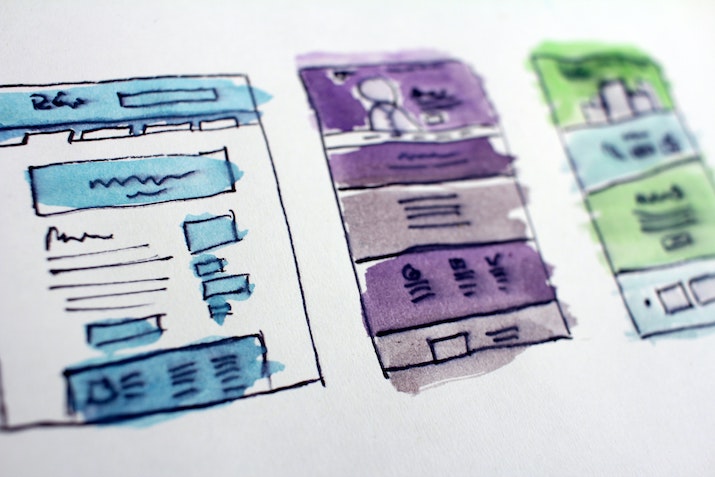Do you ever feel like you’re putting all of the right marketing pieces in place, but still aren’t seeing the results you expected? You have a good looking website with all the information needed to tell a prospect why they should buy from you. You’ve even invested in landing pages and are spending time creating social media posts and buying ads to send people to the site.
You might be wondering, “What else can I add to my strategy? Am I always going to be chasing more shiny metal marketing objects and creating more and more assets on more platforms?”
Take heart. More is not always better. Instead, consider starting to optimize what you already have to convert more website visitors, using a process called Conversion Rate Optimization.
First, What is Conversion Rate Optimization?
Conversion Rate Optimization (CRO), is defined very clearly by Moz.com as the systematic process of increasing the percentage of website visitors who take a desired action — be that filling out a form, becoming customers, or otherwise. The CRO process involves understanding how users move through your site, what actions they take, and what’s stopping them from completing your goals.
Conversion rate optimization is one of the most effective (and the fastest) strategies for turning your current web traffic into the lifeblood of your business…paying customers.
By definition, any business that operates a website (or landing pages) that lead prospects into a sales funnel needs to be performing conversion rate optimization if you want to grow your business. Simply speaking there are really only two things that happen in your business. You drive traffic into a funnel and you convert that traffic into leads and ultimately customers. Conversion rate optimization is everything you do to convert that traffic.
When you look at your business’s buyer journey and various sales funnels, there are proven strategies to encourage a prospect towards saying YES to becoming a subscriber, a lead, or even a customer. Knowing these strategies and when and where to apply them can dramatically increase your website’s conversion rate and should be a primary focus in your online strategy. And every percentage point of improvement in conversion not only leads to more sales, but continues to make your traffic investment more efficient.
So CRO improves ROAS (Return on Ad Spend) as well as your SEO efforts. Who wouldn’t want to do that?! Whatever methods you are currently using to drive traffic to your site, properly executed CRO multiplies the effectiveness of those methods.
CRO Comes in Many Forms (Pun Intended)
When it comes to optimizing your site for higher conversions, you’ll need to look at many different things, from the presence and effectiveness of forms on your site, calls to action (CTAs), the user experience (UX), including ease of navigation, site speed, etc, and more.
Think about your website experience through the eyes of your customer.
- Are you prepared to serve your customer regardless of the device they’ve found you on – meaning, is your web presence optimized for mobile, tablet and desktop?
- Are your imagery and font choices appealing and legible? An abstract image and tiny, light colored fonts might be a recipe for sending a prospect straight to your competitor. Combine that with a photo that doesn’t resonate with your ideal customer and your conversion rate might be suffering! It sounds dramatic, but did you know there are actually legal standards for things like font legibility? Yep, covered under Web Content Accessibility Guidelines from the Web Accessibility Initiative.
- How easy is it for them to contact you? Is there a Click-to-Call or Contact Us button, or are they searching through the footer for contact info only to give up and move on?
- Have you given them a clear Call to Action with the next step they need to take? Not every conversion looks like a simple Buy Now button. Perhaps they need to set up a free consultation, download a form, verify insurance, or submit a quote. How straightforward and enticing is that next step? Oh and what is your primary call to action? Is there one? Two? Too many?
- Is there enough copy on the page to inform your visitor and get them to convert? Is there way too much copy on the page that distracts them from your primary call to action?
- Are you making it really easy for the visitor to accomplish THEIR goal in coming to your page? What is THEIR goal by the way. Does it match your goal for them?
- How many distractions are on your page? Are they distracting your visitor from their goals or driving them to your desired conversion?
- Are your forms optimized for the desired action? Are you asking for too much with too little in return? Remember conversion goes down pretty much in sync with the number of fields you require they fill.
This is not even close to being an exhaustive list, but as you can see, there are so many ways to improve your website and landing pages that could increase your conversion rate exponentially!

Tools and Resources
Conversion Rate Optimization is not a quick project you can knock out over a week or two. It is an ongoing commitment to a data-driven process, that includes both quick wins and iterations using A/B & Multivariate testing over time. Additionally, there are plenty of tools and resources that will help you along the way. Below are just a few examples, but check back often as we’ll continue to explore this topic even more on our blog.
Analytics – One such tool is something you probably already have – your Google Analytics account! This is the most important place to start. And in fact your Analytics account is the first place to “optimize”, making sure your account is in tip top shape, goals and funnels are properly defined, Google Tag Manager is being properly utilized, etc.
There are a wealth of CRO improvements just waiting to be fixed hiding in your GA account. But unfortunately Google Analytics improvements are not retroactive. Which is why we ALWAYS recommend starting first with an audit and optimization of your Analytics account.
A/B Testing – A tool like Google Optimize, Optimizely or others allows you to set up A/B tests and stop guessing at what you or your web designer thinks will increase conversion. TEST first and let your users decide for you. Landing page platforms such as Unbounce have basic A/B testing built in.
Heatmaps – Another incredibly useful CRO tool for understanding user behavior is Heatmaps. Heatmaps tools such as Hotjar and others will show you how visitors are interacting with your pages, where they focus their attention, and can even show recordings of their user sessions, revealing immediate opportunities for improving their user experience and giving you crucial information about what tweaks to make in your design, copy, or Calls to Action.
User Testing – Just like A/B Testing and Heatmaps, proper implementation of user testing lets real people determine the right direction for a website or landing page. And in today’s marketplace with incredibly efficient methodologies for easily accessing real people to interact with your pages, there’s no reason you can’t include user testing in your CRO strategy.
Different types of user testing available to you are:
- In-Person: Face-to-face between interviewer and user
- Remote: Done through a computer, with the participant and the interviewer in different locations
- Moderated: A remote user test, with the interviewer overseeing the test
- Unmoderated: Participants do the test on their own, with pre-established tasks and steps (We like UserTesting.com for setting these types of tests.)

CRO Partner – The resource that might be most worth your while, however, is a partner who specializes in CRO, who can work with you at a monthly pace you’re comfortable with, to identify areas of improvement and to continuously test and optimize your website, blog and landing pages. This type of agency will already know exactly what to look for, and has the tools needed to identify or accomplish various tasks. They can guide you much deeper into the process, far beyond the initial quick wins that are easiest to spot. At the end of the day, they will save you time, and the ROI you see from higher conversions will be worth your while!
Conclusion
In marketing, there are so many areas to focus on. If you’re the type of business owner or marketing manager that really wants to see more clicks, more followers, more traffic, you aren’t alone! This is a crucial area to focus on. But as mentioned above, why pay more money for additional traffic strategies if you aren’t efficiently converting the traffic you’re currently getting?
By starting with conversion rate optimization, you can feel much more empowered and justified to invest in traffic once you have a solid, data-driven, conversion-focused web presence in place!

